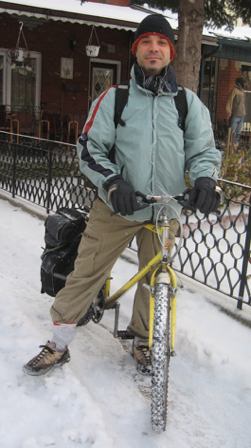 At the house we aim to eat a fair bit of local foods which isn’t always so easy in the winter. We shop at the nearby Dufferin Grove Farmers Market where the selection has whittled down to potatoes, beets, cabbage, onions, squash, leeks, turnips, shiitake mushrooms, celery root, carrots, apples, fresh baked bread from the brick ovens, and baby greens from a greenhouse. That last item turns out to be not necessarily the best choice for the environment. Greenhouses often require large amounts of energy for heating and lighting. See previous article.
At the house we aim to eat a fair bit of local foods which isn’t always so easy in the winter. We shop at the nearby Dufferin Grove Farmers Market where the selection has whittled down to potatoes, beets, cabbage, onions, squash, leeks, turnips, shiitake mushrooms, celery root, carrots, apples, fresh baked bread from the brick ovens, and baby greens from a greenhouse. That last item turns out to be not necessarily the best choice for the environment. Greenhouses often require large amounts of energy for heating and lighting. See previous article.
Many of these items were harvested a couple of months ago, but hearty roots, cabbage, squash and apples are technically still in season since they are easily stored.


 Several of us bike all winter in Toronto which isn’t usually that hard, but this year has gotten off to a very snowy start. Winter cycling can be a bit of an adventure at times. It helps to know a few techniques to deal with the cold, snow and ice. But keep in mind that you can always take a break from riding for a day or two if the weather is too extreme.
Several of us bike all winter in Toronto which isn’t usually that hard, but this year has gotten off to a very snowy start. Winter cycling can be a bit of an adventure at times. It helps to know a few techniques to deal with the cold, snow and ice. But keep in mind that you can always take a break from riding for a day or two if the weather is too extreme.